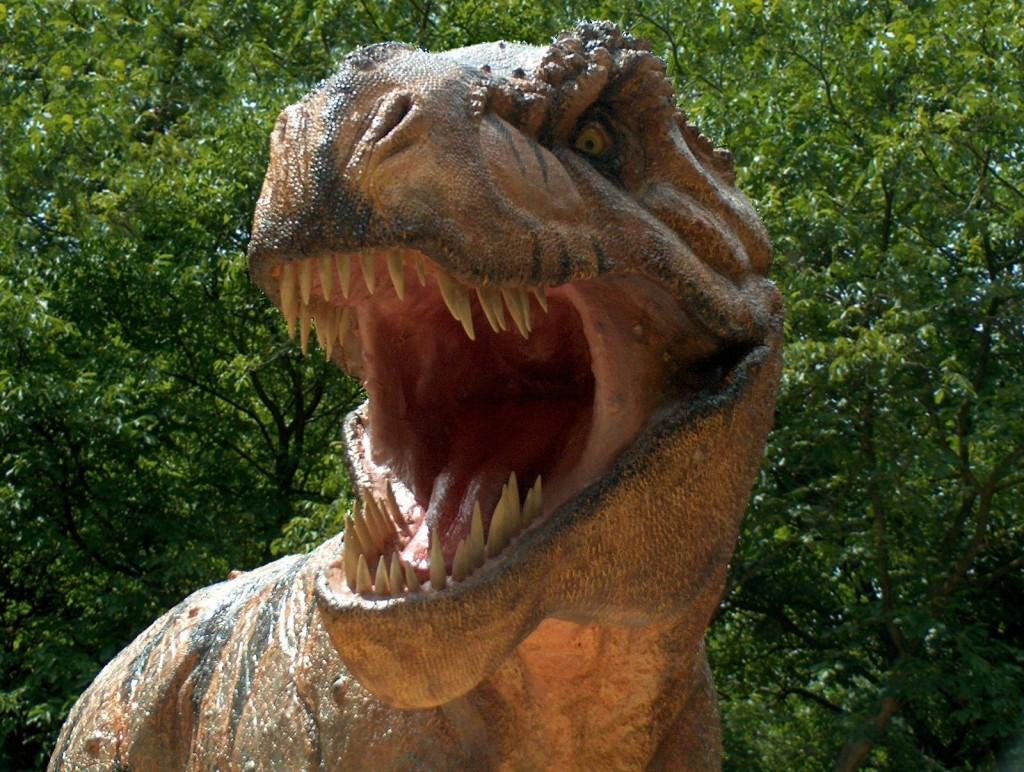People can become obsessed with dinosaurs, and its no wonder why. The popularity of these gigantic beasts that roamed the earth millions of years ago is great fodder for the imagination, and pop culture stories too, with the most recent being the major motion picture “Jurassic World.” The more we learn about dinosaurs, the more we realize there’s so much more to learn. For example, one question that has been plaguing researchers is “Why did dinosaurs become extinct?” (And it’s not from smoking cigarettes, as that Far Side cartoon suggests!) But that question is a complicated one to answer, so some researchers decide to break it down into parts that lead them to inquire more about how dinosaurs lived, instead of died.)
What qualities, characteristics, and habits did they have? One German team of researchers has an innovative angle on dinosaur research, and it has taken up the question: “How smart is a Tyrannosaurus rex, anyway?” Yes, in order to answer this question they worked with an actual T-rex skull fossil, scanning, and 3D printing parts of it to get a better idea of the T-rex’s intelligence quotient.
The question of dinosaur intelligence is hotly debated among paleontologists. Some believe they weren’t that intelligent (exchanging brain power for size in many cases?) while
The skull fossil was scanned using a machine called an XXL tomograph, which is the biggest type of this machine in the world and located at Germany’s Fraunhofer Institutes. With 1,500 separate exposures, this is said to be “the highest resolution scan ever conducted on a T-rex skull.” Unfortunately for researchers, the T-rex brain is almost untraceable, but the inside of the skull’s shape demonstrates the highly developed brain areas. Studying brain areas can reveal, for example, if a T-rex’s eyesight was poor, fair, or excellent, as well as other qualities.
Michael Boehnel, research associate at the Fraunhofer-Institut in Fuerth, with the CT scan of the t-rex skull. The actual 1.5-metre-tall skull is in the box in the background. EPA/DANIEL KARMANN
The scan also helps in restoring the skull, which is where 3D printing comes into this project. By being able to conduct a complete scan in the large XXL tomograph machine (which took 45 hours in total), researchers have also been able to reveal fractures and reconstruct missing parts of the jaw using 3D printing. If it weren’t for 3D printing’s ability to customize replacement jaw parts for the skull to be completed, it would have been much more difficult to get a full idea of other T-rex qualities related to the issue of intelligence.
So, as we frequently describe 3D printing as a technology of the future, it is research applications such as this one studying a T-rex skull that also makes 3D printing a technology of the far distant past! As researchers continue to work on this project and others like it, the hope is to develop a better understand of these magnificent reptiles, and eventually learn just why they are no longer with us.
Let’s hear your thoughts on this research project in the T-Rex forum thread on 3DPB.com.
Dutch paleontologist Anne Schulp holds a print of a CT scan of a t-rex skull at the Fraunhofer-Institut in Fuerth, Germany. EPA/DANIEL KARMANN
